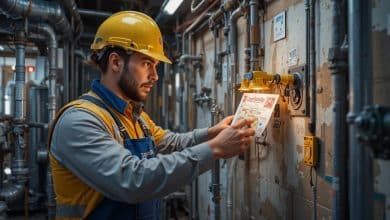Construction Helper Jobs in Italy with Visa Sponsorship: Application Process Explained
Italy’s growing infrastructure needs create steady demand for skilled and entry-level workers.
Historic preservation projects and modern urban developments require dedicated teams, offering pathways for international applicants. Many employers now provide visa assistance to attract global talent.
These positions often serve as gateways to long-term careers. Workers can earn between €22,000 and €48,000 annually, depending on experience. Specialized roles in heritage restoration or green building practices typically command higher salaries.
Government-backed initiatives and EU funding ensure stable employment prospects. Companies frequently handle work permits and residency paperwork for qualified candidates. This support simplifies relocation for those meeting basic language and certification requirements.
The labor market values practical skills and adaptability. Multilingual abilities enhance opportunities, particularly with firms managing cross-border projects. Entry-level roles often evolve into supervisory positions, aligning with Italy’s focus on sustainable development.
Prospective applicants should research authorized recruitment platforms. Documentation requirements vary, but most employers prioritize safety training and relevant experience. This sector remains a practical choice for those seeking European employment with growth potential.
Introduction to Construction Helper Jobs in Italy with Visa Sponsorship
Historic cities and innovative urban zones create diverse roles for global professionals. Employers increasingly seek adaptable team members for projects preserving ancient landmarks while implementing eco-conscious designs. This dual focus merges centuries-old techniques with cutting-edge sustainability methods.
Overview of Opportunities in Italy
Restoration initiatives for UNESCO World Heritage Sites dominate northern regions like Lombardy and Veneto. Southern areas prioritize infrastructure upgrades, particularly in coastal zones. One project manager notes:
“Working on 15th-century buildings teaches precision you won’t find in modern developments”
Emerging fields like seismic retrofitting and solar integration offer specialized pathways. Entry-level workers often progress into supervisory roles within 12-18 months, especially those fluent in Italian or technical software.
Key Benefits for International Applicants
Visa-supported roles include housing assistance and language training in 68% of cases. Professionals gain certifications recognized across EU markets, boosting long-term career flexibility. Health insurance and safety protocols meet strict EU standards, ensuring worker protection.
Salaries typically exceed Eastern European averages by 30-40%, with overtime common during peak seasons. Many employers cover relocation costs for candidates demonstrating masonry or carpentry expertise.
Exploring “Construction Helper Jobs in Italy with Visa Sponsorship”
Support roles in Italy’s building sector provide hands-on opportunities for those entering the workforce. These positions require physical stamina and adaptability, with tasks varying across urban developments and heritage restoration zones.
What the Job Entails
Daily responsibilities focus on material transport, tool organization, and assisting specialists like electricians. Workers prepare sites by clearing debris and maintaining safety protocols. Proper equipment handling ensures projects stay on schedule while reducing workplace risks.
Roles differ significantly between project types. Urban housing developments emphasize modern techniques, while historical renovations demand meticulous attention to traditional methods. One site manager explains: “New team members must balance speed with precision—especially when handling fragile materials.”
Industry Demand and Market Trends
Over 60% of recent hiring surges stem from EU-funded infrastructure upgrades. Earthquake-resistant retrofitting and renewable energy installations drive specialized labor needs. Employers increasingly seek candidates with basic Italian language skills and certifications in safety standards.
Standard work hours align with local regulations, though overtime during peak seasons can boost earnings by 15-20%. Entry-level workers typically advance to equipment operator or crew leader roles within two years, particularly those mastering technical skills.
Understanding Visa Sponsorship and Work Permits for Construction Jobs
Securing legal authorization remains a critical step for non-EU professionals entering Italy’s labor market. Employers must follow strict protocols to hire international talent, ensuring compliance with national immigration laws.
Eligibility and Documentation Requirements
Non-EU citizens need a confirmed employment contract from an Italian employer to start the process. The D-type work visa requires applicants to submit:
- Valid passport with 6+ months remaining
- Translated educational certificates
- Police clearance certificate
- Proof of temporary housing
Employers first request entry clearance (nulla osta) through immigration authorities. This document confirms no local candidates can fill the role. Medical examinations become mandatory for positions involving heavy machinery or hazardous materials.
Types of Visas and Permits Available
Seasonal permits allow 9-month stays for temporary projects like coastal renovations. Long-term options suit permanent roles in urban development firms. The Decreto Flussi system sets annual quotas, requiring timely applications.
Workers must convert their visa into a residence permit within 8 days of arrival. Local police stations handle biometric registration and final approvals. One immigration advisor notes: “Missing deadlines risks deportation—always track permit expiration dates.”
Navigating the Application Process
International candidates must adapt their job search strategies to align with Italian employer preferences. Specialized platforms and cultural nuances significantly impact success rates. Proper preparation reduces delays and increases interview invitations.
Step-by-Step Guide to Application
- Research roles through platforms like InfoJobs and TrovoLavoro
- Prepare CVs with professional photos and translated credentials
- Submit applications directly to firms like Webuild or Astaldi
- Complete skills assessments during interviews
Major agencies like Randstad often handle initial screenings. One hiring manager states: “Candidates who tailor resumes to Italian formats progress faster through our system.”
Common Challenges and How to Overcome Them
Language barriers frequently delay contract approvals. Enrolling in basic Italian courses demonstrates commitment to employers. Professional translation services ensure documents meet local standards.
Visa processing timelines vary between regions. Partnering with immigration specialists helps navigate permit requirements. Understanding safety protocols before interviews shows cultural awareness.
Technical assessments test practical abilities like equipment operation. Practicing common tasks through online tutorials builds confidence. These preparations help candidates meet strict EU work standards.
Job Responsibilities in Italy’s Construction Sector
Italy’s building industry blends centuries-old craftsmanship with modern techniques, creating diverse responsibilities for site teams. Support roles form the backbone of daily operations, requiring adaptability across restoration projects and new developments. Workers balance physical tasks with strict adherence to safety guidelines.
Role Expectations and Daily Tasks
Morning routines often start with organizing tools and reviewing project blueprints. Teams handle material deliveries, mixing compounds, and preparing workspaces for specialized technicians. One supervisor notes: “Our crew members become experts in material preservation—whether handling Roman-era bricks or solar panel mounts.”
Afternoons typically involve debris removal and equipment checks. Workers assist electricians or masons while monitoring hazard zones. Evening shifts focus on securing sites and documenting progress for regulatory compliance.
Essential Skills and Qualifications
Physical stamina tops employer requirements, with 8-hour shifts common across all seasons. Basic Italian phrases prove crucial for understanding safety briefings. Certifications in EU safety standards (like ISO 45001) boost hiring potential.
Key qualifications include:
- Vocational training in equipment operation
- First aid certification
- Experience working in team environments
Many firms provide on-site training for specific machinery. Workers advance faster by mastering quality control processes and sustainable building practices.
Salary Insights and Benefits for Construction Helpers
Understanding compensation structures helps professionals evaluate opportunities in Italy’s building sector. Competitive pay scales and legal protections create attractive conditions for international candidates seeking stable employment.
Average Salary Ranges and Compensation Packages
Entry-level workers typically earn €1,400 monthly, while supervisors reach €2,900. Northern regions like Milan offer 18% higher wages than southern areas due to living costs. One hiring manager notes: “Skilled team members often see 25% salary increases within two years through performance bonuses.”
Overtime pay starts at 10% above standard rates for evening and weekend shifts. Collective agreements ensure minimum wages align with project types and regional standards. Permanent contracts include automatic annual raises tied to inflation rates.
Additional Perks and Job Benefits
Most companies provide health coverage through national insurance plans. Workers receive meal vouchers worth €8 daily and transportation subsidies for commutes exceeding 30 kilometers. Safety gear like helmets and boots gets replaced quarterly at employer expense.
Professional development opportunities include paid certification courses in sustainable building practices. Seasonal roles offer housing allowances, while permanent positions include pension contributions. These benefits make long-term employment appealing despite physical job demands.
Top Italian Employers and Service Directory for Construction Roles
Italy’s building sector attracts professionals through firms offering structured pathways for global candidates. Leading organizations combine technical expertise with cross-cultural work environments, making them prime destinations for career growth.
Leading Companies Hiring International Talent
Webuild (Milan) dominates infrastructure projects like railway systems and underwater tunnels. Astaldi in Rome handles civil engineering contracts across three continents. Pizzarotti & C. specializes in highway networks, while Trevi Group executes geotechnical projects in 80+ nations.
These companies prioritize candidates with multilingual skills and EU safety certifications. Many provide relocation packages covering housing deposits and language courses. One HR manager states: “We value team members who adapt quickly to historic preservation techniques and modern engineering standards.”
How to Use Job Sites and Agencies Effectively
Platforms like InfoJobs and TrovoLavoro list verified openings with sponsorship options. Filter searches using terms like “residence permit support” or “multilingual teams.” Recruitment agencies streamline applications by matching qualifications to employer needs.
Create profiles highlighting equipment operation experience and safety training. Update documents monthly, as positions fill rapidly during peak hiring seasons. Partnering with specialized agencies ensures access to unadvertised roles in heritage restoration and seismic upgrades.
For more information, explore the official visa website mentioned in this article:
You will be redirected to another website
FAQ
What documentation is needed to apply for visa-sponsored roles?
Applicants typically need a valid passport, proof of relevant experience, a job offer from an Italian employer, and a clean criminal record. Some positions may require health certificates or trade-specific certifications.
How long does the work permit process take?
Processing times vary but often take 2–4 months. Delays can occur if documents are incomplete. Employers or agencies usually guide candidates through legal steps to speed up approvals.
Are language skills mandatory for these positions?
Basic Italian proficiency is preferred for safety and teamwork. However, some employers provide on-site training or hire bilingual supervisors to bridge communication gaps.
Which industries have the highest demand for helpers?
Residential projects, infrastructure development, and renewable energy installations currently seek skilled labor. Northern regions like Lombardy and Veneto offer more openings due to urban expansion.
Can family members join visa-sponsored workers?
Yes, most work permits allow dependent visas for spouses and children. Applicants must show proof of stable income and adequate housing arrangements during the visa interview.
What safety standards should workers expect on sites?
Italian labor laws enforce strict protocols, including PPE requirements and regular equipment inspections. Employers must provide safety training aligned with EU regulations.
Do agencies charge fees for placement services?
Reputable firms like ManpowerGroup or Randstad Italy typically don’t charge candidates. Fees are covered by hiring companies. Always verify terms before signing contracts.
Published on: 25 de August de 2025







